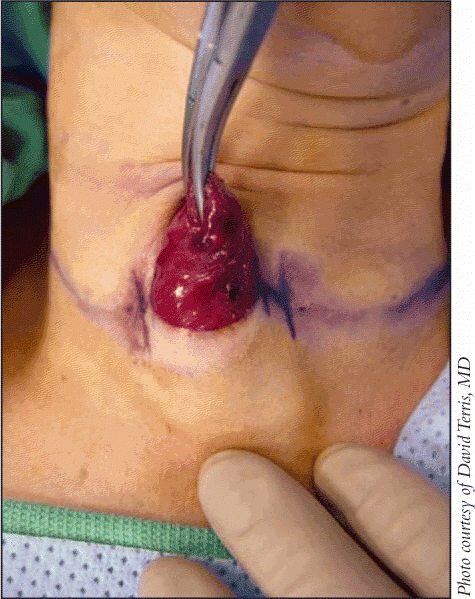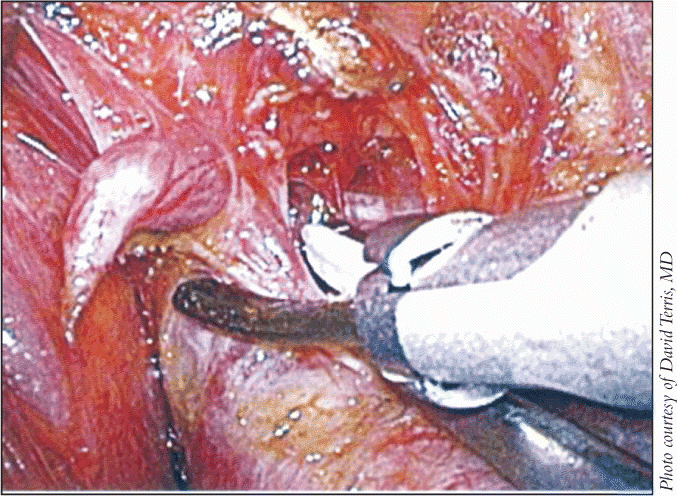
Explore This Issue
February 2009In his presentation, Dr. Terris showed several film clips of actual procedures to give a sense of what a doctor is looking at when performing endoscopic surgery. He described the removal of a left-sided lesion, pointing out the ease of identifying nerves with endoscopic magnification. He also narrated the ligation of the superior thyroid artery using ultrasound-based devices.
In a matter of five or six seconds, the vessel is completely and reliably ligated. The device generates a little bit of steam that can be evacuated, he said. We then look to secure the thyroid vein in exactly the same way. We can get to within one or two millimeters to the nerve with temperatures that are reached that are so much lower than with electric cautery. The nerve dissection is done off the monitor.
We use blunt elevators and-in a significant departure from the way I was trained-we dissect perpendicular to the direction of the nerve. I was trained to dissect parallel to the nerve, he said. The use of the blunt elevators allow for the thyroid to be retracted medially.
It is far easier and gentler on the nerve to identify it that way, Dr. Terris said. Once the gland is exteriorized, we follow it all the way to the junction with the larynx to make sure the nerve is not injured.
He showed before-and-after pictures of one patient-a pediatric nurse in his institution who underwent the surgery. The evidence of the operation was virtually undetectable. Obviously, these surgeries heal quite well, he said. He made the incision low in the neck-about 20 mm in length-and was able to safely remove the thyroid gland.
Technology Advances Enable Change

What has allowed us to accomplish these beautiful access techniques has been changes in technology, Dr. Terris said. Advanced energy devices, whether it be a laser device or an ultrasonic device, have certain advantages. The ultrasonic devices reach temperatures of 70 to 100 degrees Celsius, which is enough to ligate blood vessels but not as high as you get with electrocautery. That’s the safety factor. Another advantage is that it is very efficient. It lets you ligate and cut in a single step rather than with the suture technique. In addition to ligating and cutting, now you can actually dissect with this instrument. That has increased our efficiency, which has cut down our time in surgery. It is nearly bloodless surgery. If we lose more than 5 cc of blood on a case, it is unusual. I like the fact that there is nothing left in the wounds. There are no clips, there are no silk ties. Because of the confidence in hemostasis, we are able to get away from using drains; we are now doing about 70 percent of our cases on an outpatient basis.
Leave a Reply